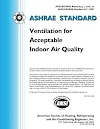Principles of Heating, Ventilating, and Air Conditioning, a textbook based on the 2017 ASHRAE
Handbook—Fundamentals, should provide an attractive text for air-conditioning courses at engineering
colleges and technical institutes. The text has been developed to give broad and current coverage
of the heating, ventilation, and air-conditioning field when combined with the 2017 ASHRAE
Handbook—Fundamentals.
The book should prove most suitable as a textbook and subsequent reference book for (a) undergraduate
engineering courses in the general field of HVAC, (b) similar courses at technical institutes,
(c) continuing education and refresher short courses for engineers, and (d) adult education courses
for nonengineers. It contains more material than can normally be covered in a one-semester course.
However, several different single-semester or shorter courses can be easily planned by merely eliminating
the chapters and/or parts that are least applicable to the objectives of the particular course.
This text will also readily aid in self-instruction of the 2017 ASHRAE Handbook—Fundamentals by
engineers wishing to develop their competence in the HVAC&R field.
Although numerous references are made to the other ASHRAE Handbook volumes, sufficient
material has been included from these to make this text complete enough for various courses in the
HVAC&R field. The material covered for various audiences in regular university courses, technical
institute courses, and short courses can and will vary greatly. This textbook needed to be complete
to satisfy all of these anticipated uses and needs. Toward this end, the following major sections are
included:
Part I General Concepts, Chapters 1–10
Part II Air-Conditioning Systems, Chapters 11–16
Part III HVAC&R Equipment, Chapters 17–20
Although the 2017 ASHRAE Handbook—Fundamentals is published in an SI edition, which uses
international units, and an inch-pound (I-P) edition, this single version of Principles of Heating, Ventilating,
and Air Conditioning is designed to serve the I-P edition with some SI interspersed throughout.
There are several significant changes in this edition. Chapter 4 has new values for climatic design
information. Chapter 7 has been extensively revised with new design data. These changes make Principles
compatible with the 2017 ASHRAE Handbook—Fundamentals. In addition, the chapters on
system design and equipment have been significantly revised to reflect recent changes and concepts
in contemporary heating and air-conditioning system practices. Also, the Solutions Manual has been
extensively edited.
A particular point of confusion must be pointed out. Because this book was developed to be used
with the ASHRAE Handbook’s Fundamentals volume, a number of tables and figures have been
reproduced in the original form, complete with references to material elsewhere in Fundamentals
(not in this book). Thus, if the subheading in the table or figure indicates that it is a Fundamentals
table or figure, then all references to other locations, equations, tables, etc., refer to those in Fundamentals,
not in Principles.
Dr. Harry Sauer, Jr., one of the co-authors of this textbook, passed away in June 2008. Likewise,
William J. Coad was also a co-author of this textbook and passed away in August 2014. Both Dr.
Sauer and Mr. Coad made significant contributions to the book.







3 Comments
Exploring the Principles of Heating, Ventilating, and Air Conditioning opens up a world where thermodynamics meets comfort, where airflow dynamics dance with energy efficiency, and where the balance between indoor climate control and environmental sustainability is delicately maintained. Let's dive into the mechanics of comfort and explore the science behind keeping spaces just right.
ReplyDeleteWhat an incredibly informative read on the "Principles of Heating, Ventilating, and Air Conditioning"! 🌬️ Your comprehensive breakdown of the key concepts and principles behind HVAC systems is a must-read for anyone interested in understanding how these systems work.
ReplyDeleteI particularly appreciated how you elucidated the importance of proper ventilation in maintaining indoor air quality and how different HVAC components work together to achieve optimal comfort and efficiency. Your explanation of heating and cooling processes, along with the role of ductwork and air distribution, was both clear and insightful.
This is an excellent overview of the foundational principles behind HVAC systems. The way you've broken down heating, ventilation, and air conditioning components makes the content accessible for both beginners and professionals seeking a quick refresher. Understanding the balance between thermal comfort, air quality, and energy efficiency is critical, especially with the increasing push for sustainable building design. It would be great to see future posts delve deeper into advanced control strategies or the integration of smart HVAC technologies. Keep up the valuable work!
ReplyDelete